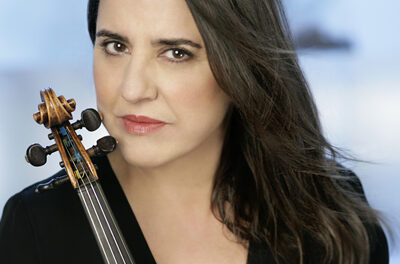No one can accuse the folks at the North Carolina Symphony of lacking ambition or of taking an extended holiday. For their first program of 2014, they decided to tackle the symphonic work – the one that goes short-short-short-long, short-short-short-long.
But their program didn’t begin with those four haunting notes. It opened instead with Edward Elgar’s Introduction and Allegro for Strings, Op. 47, an early twentieth century work based loosely on the Baroque concerto grosso form. It revolves around the interplay between a large string orchestra and a small group of string soloists, represented here by violinists Brian Reagin and Elizabeth Phelps, violist Samuel Gold, and cellist Bonnie Thron.
The solo quartet played in front of Music Director Grant Llewellyn, situating him in a precarious position directly between the two ensembles. Due to his careful posture and apparent neck flexibility, however, he was able to maintain steady contact with both groups throughout. On only one or two occasions did an orchestral entrance seem sloppy, and even then players were quick to recover. On the whole, this set-up lent a welcome sense of intimacy to the soloists’ sound. Particularly in softer, more exposed moments, the expressiveness of Brian Reagin’s playing was palpable.
After healthy and deserved applause, the NC Symphony turned its attention to a more familiar work, Mozart’s Concerto No. 25 in C Major for Piano and Orchestra, K. 503. Here Llewellyn was in fine form. He consistently drew out crisp, buoyant phrasing from his orchestra, often evoking Mozart’s most playful qualities in the process. Only rarely did he dip his baton into Romantic wells, and when he did, the resulting legato felt appropriate.
Joining the orchestra was Irina Zahharenkova, a young Estonian pianist who possesses nimble fingers more than capable of executing Mozart’s intricate passagework. Some of her best playing came early on, in the Allegro maestoso, when she produced wave after wave of colorful, seamless sound. Some phrases swelled and then retracted; others cascaded delicately down the scale. All of them were thoughtfully shaped in one way or another. The only thing lacking throughout was a tangible sense of chemistry between piano and orchestra. Zahharenkova often seemed isolated, glancing over at Llewellyn from time to time but otherwise remaining in her own expressive world. Particularly in dialogic moments, it was unclear whether Zahharenkova was attentively responding to orchestral gestures or simply playing her own notes.
Intermission marked a programmatic shift: from bright to dark, from light to heavy, from two enjoyable pieces to the one everyone came to hear. And with those famous first four notes, Beethoven’s Fifth Symphony took off. Llewellyn opted for a rather brisk tempo throughout, and achieved mixed success. He certainly captured the work’s unbridled energy; where performances of a more moderate tempo tend to drag, his hummed right along. And at times his swifter tempo seemed to bring out the work’s conversational character, particularly in the opening movement, when the four-note theme is passed from voice to voice.
However, Llewellyn’s tempos became a problem in two key respects. Several interesting lines – not least that jagged cello solo in the second movement – became almost inaudible. Because of the furious pace, there was hardly time for individual pitches to be clearly distinguished, and the result was often a muddy melodic line. But the larger problem, from my perspective at least, was that the music rarely got a chance to breathe. Some of the Fifth’s most sublime moments depend more on taking one’s foot off the gas pedal than speeding along. In those moments, the music needs to become spacious – it needs to fill the hall with the thick cloud of longing that sent E.T.A. Hoffman and others into such a Romantic fervor.
All things considered, this remains an impressive program that deserves strong audiences for the remainder of its run, for details of which, see the sidebar. Please note that the second performance in Raleigh, on January 11, will be part of an ongoing recording project by the orchestra. This program also repeats in Chapel Hill on January 12. Additional performances of the Fifth by this orchestra – in Fayetteville on January 30 and in New Bern on February 4, in both cases with different companion works (and with stops along the way in Salisbury and Henderson) – will be conducted by William Henry Curry.












